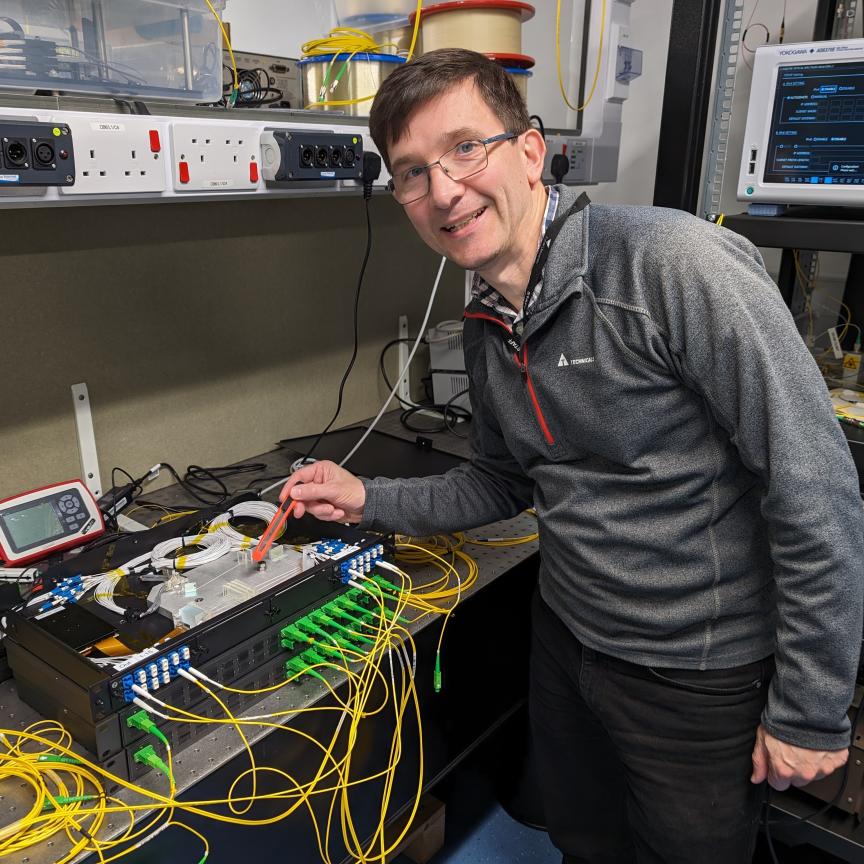A team of researchers from the University of Southampton's Optoelectronics Research Centre (ORC) have demonstrated the first all-silicon optical transmitter at 100Gb/s and beyond without the use of digital signal processing (DSP).
The team, under the leadership of Professor Graham Reed within the Zepler Institute for Photonics and Nanoelectronics, published their findings in the Optical Society’s journal Optica.
The silicon modulator was fabricated through Southampton’s Cornerstone research fabrication foundry service. This is a UK-based, license free, open source silicon photonics rapid prototyping foundry. The prototyping platform utilises industrially-compatible deep-UV projection lithography to enable seamless scaling-up to production volumes, but also retains device level innovation capability and flexibility in its process flows. The modulator was then integrated with bespoke drivers that are designed in-house and fabricated at the TSMC electronics foundry in Taiwan. Fabrication and integration work is carried out at the university’s Mountbatten cleanroom complex.
The research was advanced within Southampton’s Silicon Photonics Group as part of the £6m Engineering and Physical Sciences Research Council (EPSRC) Programme Grant Silicon Photonics for Future Systems.
Dr Ke Li, lead author and lead inventor on the technology’s associated patents, commented: ‘In contrast to previous work in the field, we have introduced a new design philosophy where photonics and electronics must be considered as a single integrated system in order to tackle the demanding technical challenges of this field.’
Reed added: ‘Our results are based upon a fully integrated electronic-photonic system, not a laboratory probed stand-alone silicon modulator. In all other work to date that does not rely on DSP to recover signal integrity, integration of the electronics and photonics has resulted in an inferior system performance as compared to the performance of the individual components, resulting in a maximum data rate of approximately 56Gb/s. At a time when most researchers around the world are striving for a system level improvement of the order of five to 10 per cent, our results represent close to a 100 per cent improvement, so we are delighted that our design philosophy is proving successful. This is why we believe these results are important, as they can change the way designers configure datacom transmission systems of the future.’

